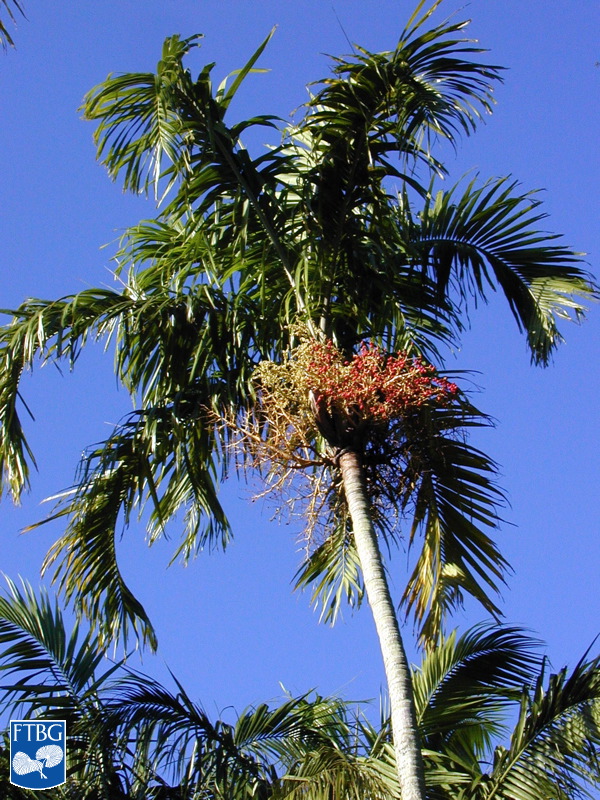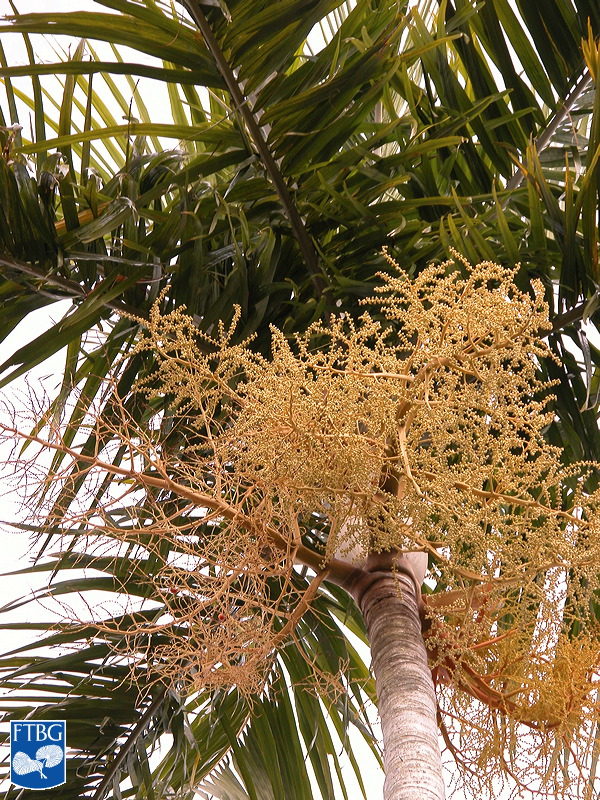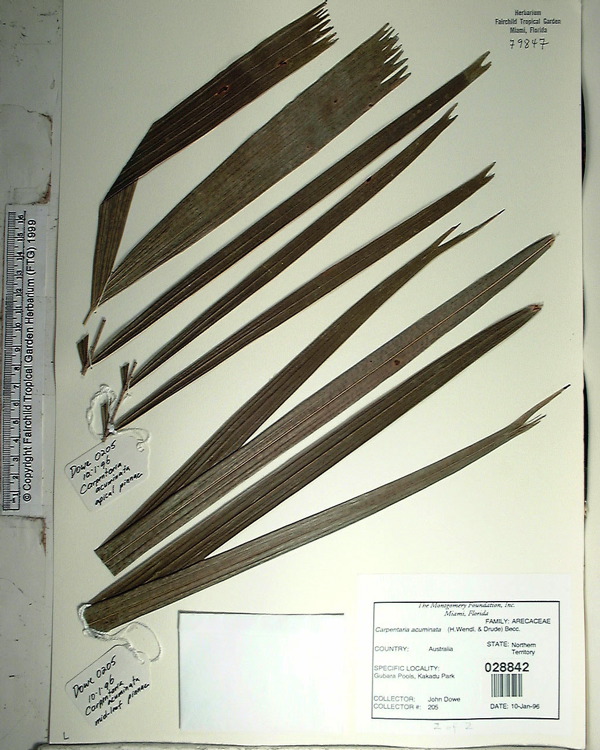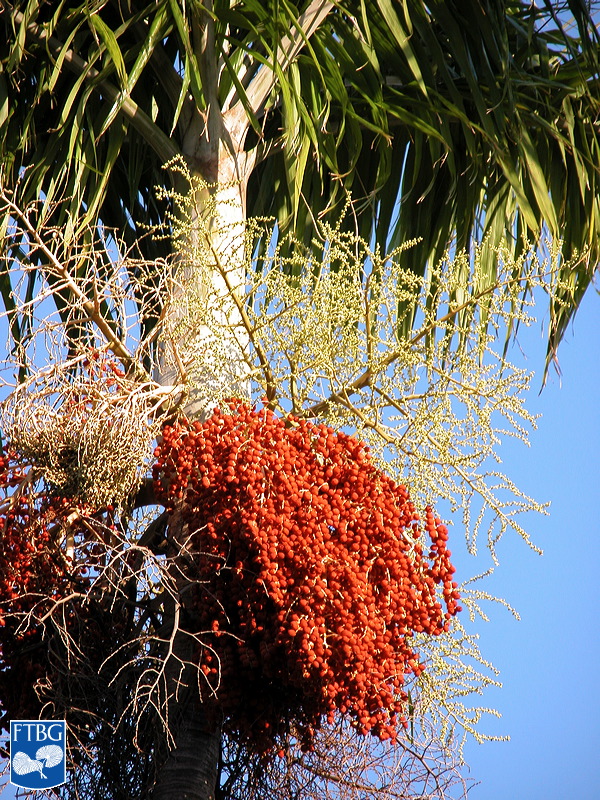Carpentaria acuminata
|
Carpentaria acuminata canopy. Photograph courtesy of Fairchild Tropical Botanical Garden, Guide to Palms http://palmguide.org/index.php |
|
Carpentaria acuminata inflorescence and ringed leaf scars on stem. Photograph courtesy of Fairchild Tropical Botanical Garden, Guide to Palms http://palmguide.org/index.php |
|
Carpentaria acuminata Leaflets (note broader apical leaflets). Photograph courtesy of Fairchild Tropical Botanical Garden, Guide to Palms http://palmguide.org/index.php
|
|
Carpentaria acuminata canopy with ripe fruit. Photograph courtesy of Fairchild Tropical Botanical Garden, Guide to Palms http://palmguide.org/index.php |
|
Carpentaria acuminata inflorescence and crown shaft. Photograph courtesy of Fairchild Tropical Botanical Garden, Guide to Palms http://palmguide.org/index.php |
Common name
carpentaria palm
Description
Stems: Solitary, slender, gray stems to 15 m tall and 15-20 cm in diameter, slightly broader at the base, with widely spaced (up to 25 cm apart) rings of leafleaf:
in palms -- the leaf blade (which is usually divided into leaflets or leaf segments), the petiole (or leaf stalk) and the sheath (which forms the attachment of the leaf to the stem)
scars. Leaves: Pinnate pinnate:
like a feather; palms with pinnate leaves usually have compound leaflets attached to a rachis, although a pinnate leaf may be entire with pinnate veins (e.g., <em>Chamaedorea metallica</em>)
1.5-2 m long, with drooping, lanceolatelanceolate:
term to describe leaves and leaflets that are longer than wide and widest below the mid-point; lance-shaped
leaflets growing in a single plane. The crown shaftcrown shaft:
a cylinder of clasping leaf sheaths toward the apex of the stem, found in some pinnate-leaved palms (e.g., <em>Wodyetia bifurcata</em>)
is up to 1 m long, somewhat swollen at the base, and varying in color from green to grayish-white. Both upper and lower leaflet surfaces are green, with the underside slightly blue-green, and only the midrib is prominent. Leaflet tips vary from truncate to praemorsepraemorse:
with a jagged edge or like a fish tail
with the apical leaflets broader than others. The underside of the leaflet is scattered with tiny brown scales. Flowers and fruits: Inflorescenceinflorescence:
the reproductive structure of a flowering plant, including palms, consisting of flowers and associated bracts
about 1-1.5 m long with many pendulous branches. Male and female flowers are white to greenish white and are borne on the same inflorescenceinflorescence:
the reproductive structure of a flowering plant, including palms, consisting of flowers and associated bracts
. The scarlet red, ovoid fruits are 1-1.5 cm long and contain irritating calcium oxalate crystals.
Diagnostic features
A tall, pinnate-leaved palm with a slender crown shaftcrown shaft:
a cylinder of clasping leaf sheaths toward the apex of the stem, found in some pinnate-leaved palms (e.g., <em>Wodyetia bifurcata</em>)
, arching leaves, with apical leaflets appearing fused.
May be confused with
Archontophoenix cunninghamiana, which has pink to lavender flowers and all linearlinear:
term to describe leaves and leaflets that are narrow with nearly parallel margins; like a line
leaflets, rather than white to greenish-white flowers and broad apical leaflets in Carpentaria acuminata; Veitchia sp. which have leaflets that are drooping, rather than held in a V-shape
Distribution
Native to Northern Australia, especially near brackish water of lowland estuaries or along forest streams
Additional comments
Planted as an ornamental and street tree in South Florida
Scientific name
Carpentaria acuminata (H.Wendl. & Drude) Becc.
Family
Arecaceae/Palmae
Synonyms
Kentia acuminata H.Wendl. & Drude







